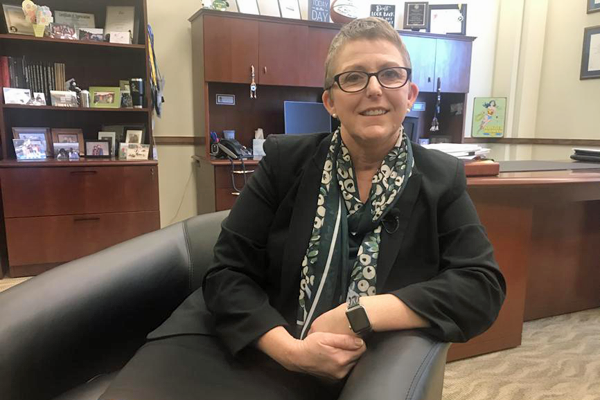
Excerpt from the Dayton Business Journal
Susan Edwards has never shied away from taking risks.
In fact, she's been taking them her entire life. The Australia native paid her own way through postsecondary education, and her path to a degree was somewhat unconventional. That's partly why she relates so strongly to Wright State University's growing adult student population.
"Nobody else from my family went to university — it was unheard of," she said. "I worked full-time, 40 hours a week ... The only time I was a full-time student was when I was a Ph.D., but I was also a mother of a one-year-old at the time, too."
Now, Edwards is preparing to take another big risk: helping WSU establish and maintain a trajectory of long-term stability as the school's next president. It's not a job Edwards planned to take when she joined the university as provost in May 2018, but she's never been one to back down from a challenge.
You’ve already taken on plenty of operational duties as provost. Come Jan. 1, how will your day-to-day responsibilities change?
Provost is a lovely position where you actually get to make things happen, but you don't necessarily have to be out front. The difference here will be that the president is more out front, and so it pushes me out of my comfort zone.
I like being the person behind the scenes making things happen. And so now, I have to find somebody who can help me do that. I haven't really gotten that far yet, because I didn't anticipate this happening.
What steps are you exploring to reverse Wright State's trend of enrollment decline?
We're looking at how to meet the adult student. When we think of higher education (we think of) the student that comes direct from high school — but really what we’re missing is a whole group of people that wish to retool. They may not have had the means to actually go through college early on, and now they do, and now they're looking to change direction or advance in their own careers. So, how do we meet those people where they're at? How do we provide flexible delivery modes?
We have expanded some of our online offerings, and we're going to continue to invest in that area. We’ll always be a brick and mortar institution, but this is just to supplement the classes, because as you know, even our 18 to 24-year-olds work. I worked full-time all the way through my undergraduate — 40 hours a week — all the way through my associates and my bachelors. People need to be able to take classes when they can take classes, and online gives them that option.
Are there any initiatives you’re looking at to make Wright State a stronger pipeline to aid the workforce needs of employers?
Higher education has a horrible habit of telling people, “This is what you need.” My job is to listen to what the needs are from those industries and actually help meet those needs.
The idea is to really build solid relationships with these groups and help them meet the needs that they have in terms of workforce development — whether that's partnering with them to develop internships or co-ops or shadowing opportunities — so that our students already have an experience working with that particular employer. Our students become more hirable at the end, or more employable at the end, because they’ve got that experience.

